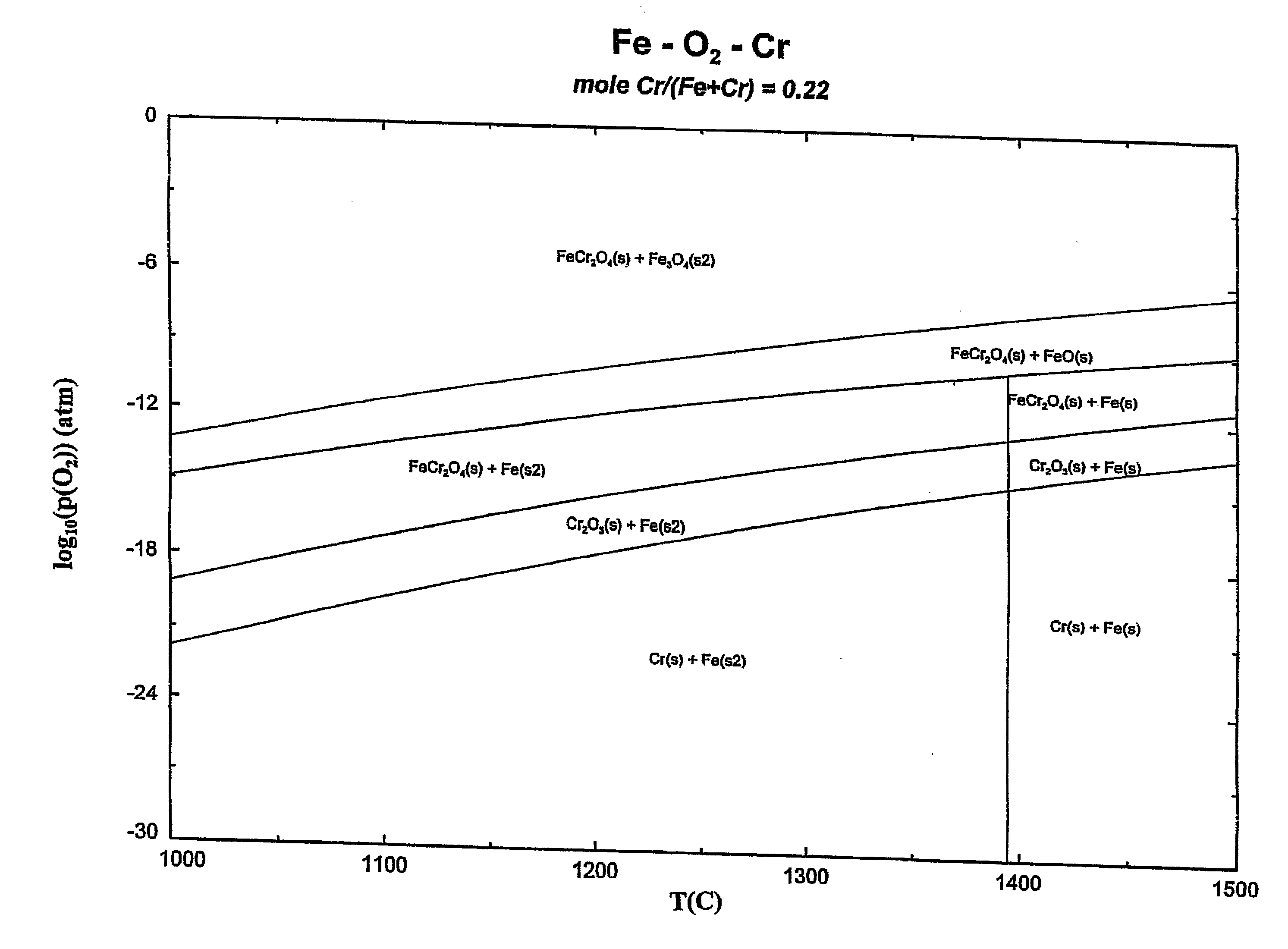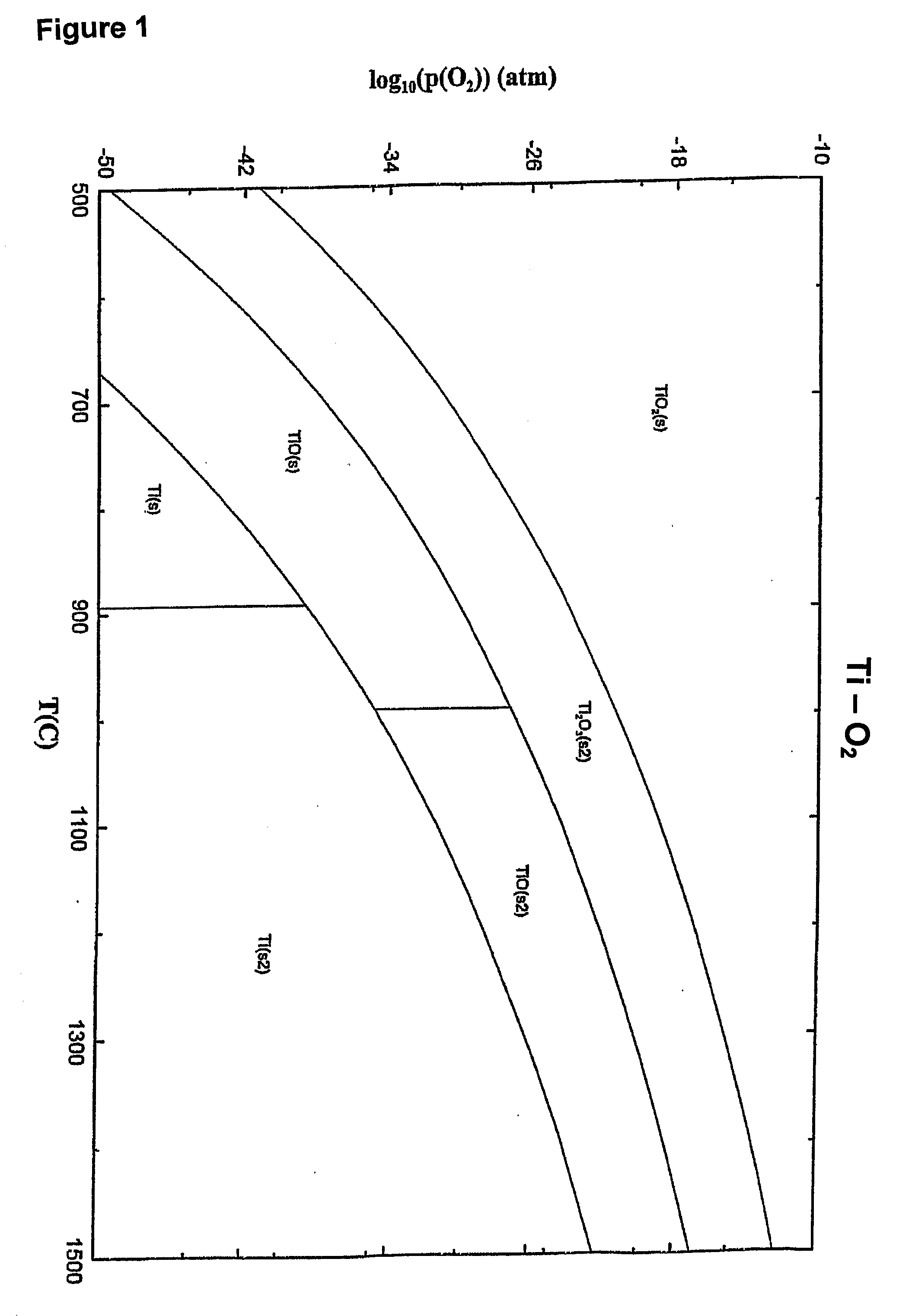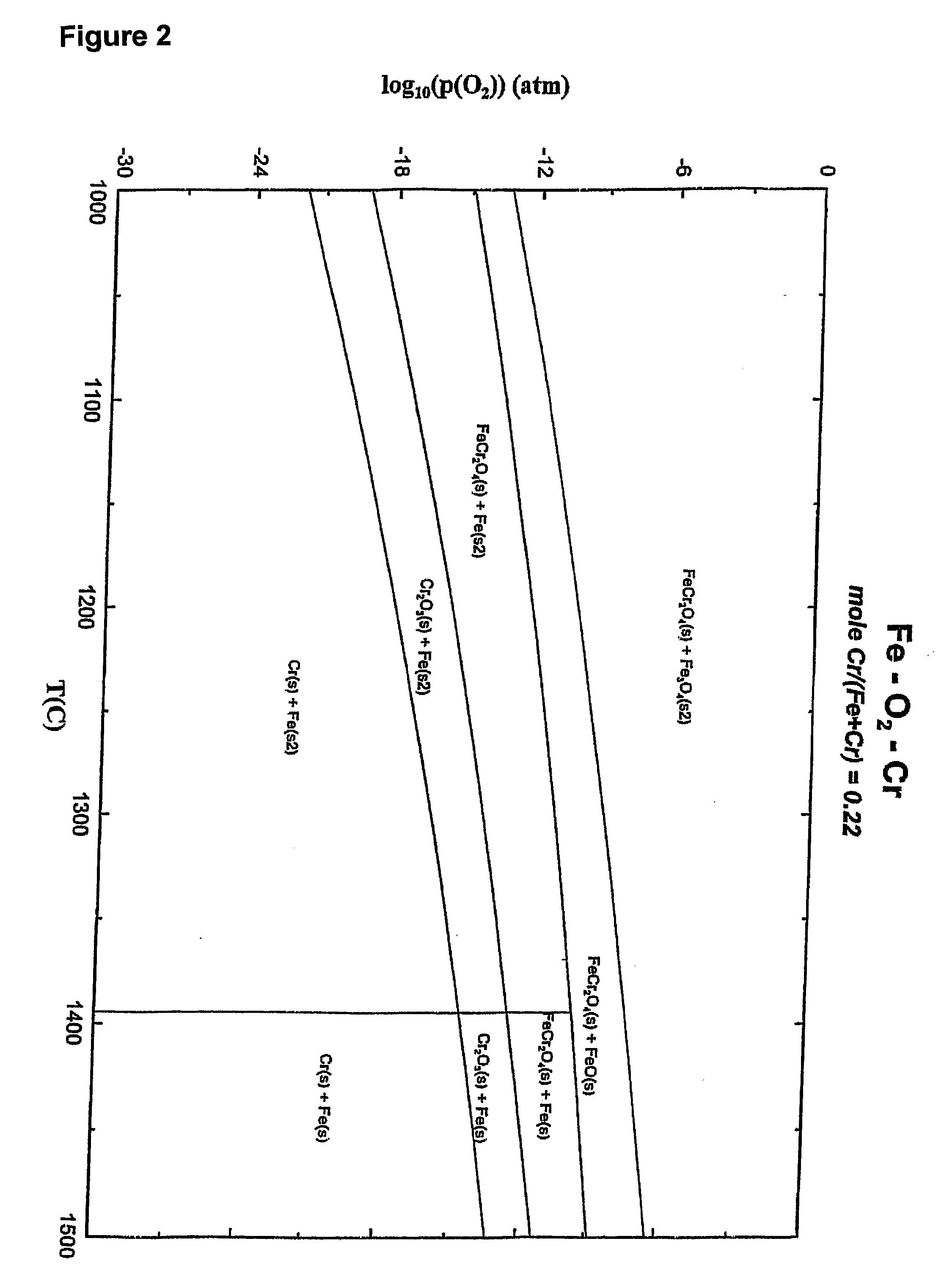Method for Shrinkage and Porosity Control During Sintering of Multilayer Structures
- Summary
- Abstract
- Description
- Claims
- Application Information
AI Technical Summary
Benefits of technology
Problems solved by technology
Method used
Image
Examples
example 1
Manufacture of a Flat Plate Structure with Graded Porosity
[0103] Layer 1: FeCr0.23Ni0.02Mn0.01 alloy powder with an average particle size of 20 microns was mixed with Fe2O3 (d50 about 1 micron) and Cr2O3 (d50 about 1 micron) in a weight ratio of 90:7:3. 15 vol % PMMA spheres (d50 about 5 microns) were added as pore formers. After mixing, a suspension was made by ball milling, using an organic binder system. With the so formed suspension, a 500 micron thick sheet was formed by tape-casting.
[0104] Layer 2: A suspension was made as described above using FeCr0.23Ni0.02Mn0.01 alloy powder with an average particle size of 5 microns. The suspension was tape-casted directly onto layer 1.
[0105] After drying, the multilayer structure was heat treated in air at about 450° C. for about 1 hour with a temperature increase of about 50° C. / h for burn out of the organic binder. The sample was subsequently heat treated under reducing conditions at 1200° C. for about 4 hours with a temperature incr...
example 2
Manufacture of a Flat Plate SOFC Cell
[0107] Layer 1: FeCr0.20Ni0.02Mn0.01Ti0.04 alloy powder with an average particle size of about 25 microns was mixed with Fe2O3 (d50 about 1 micron) and Cr2O3 (d50 about 1 micron) in a weight ratio of 87:9:4. 20 vol % PMMA spheres (d50 about 10 microns) were added as pore formers. After mixing a suspension was made by ball milling using an organic binder system. The so formed suspension was formed in to a 300 micron sheet by tape-casting.
[0108] Layer 2: FeCr0.20Ni0.02Mn0.01Ti0.04 alloy powder with an average particle size of about 10 microns was mixed with Fe2O3 (d50 about 1 micron) and Cr2O3 (d50 about 1 micron) in a weight ratio of 91:6:3. 10 vol % PMMA spheres (d50 about 5 microns) were added as pore formers. After mixing a suspension was made by ball milling using an organic binder system. The so formed suspension was tape cast on top of layer 1 in a thickness of about 150 microns by tape-casting.
[0109] Layer 3. A 20 micron thick anode laye...
PUM
| Property | Measurement | Unit |
|---|---|---|
| Fraction | aaaaa | aaaaa |
| Percent by mass | aaaaa | aaaaa |
| Shrinkage | aaaaa | aaaaa |
Abstract
Description
Claims
Application Information
 Login to View More
Login to View More - Generate Ideas
- Intellectual Property
- Life Sciences
- Materials
- Tech Scout
- Unparalleled Data Quality
- Higher Quality Content
- 60% Fewer Hallucinations
Browse by: Latest US Patents, China's latest patents, Technical Efficacy Thesaurus, Application Domain, Technology Topic, Popular Technical Reports.
© 2025 PatSnap. All rights reserved.Legal|Privacy policy|Modern Slavery Act Transparency Statement|Sitemap|About US| Contact US: help@patsnap.com



